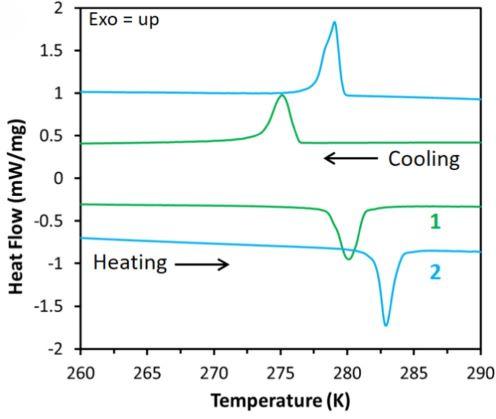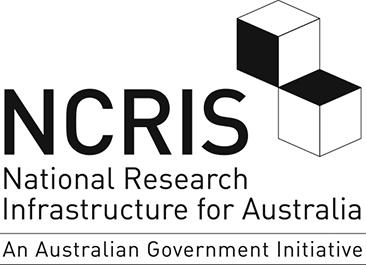

Manipulating a Thermosalient Crystal Using Selective Deuteration
Published by NDF staff, 30th April, 2025
Dr Alexander Angeloski of the National Deuteration Facility led a study that demonstrated deuteration can manipulate the properties of a crystal that converts heat into mechanical motion.
Thermosalient crystals are solids that are able to “jump” or move with a change in temperature. This motion is due to phase transition within the material. These materials have potential applications such as microscopic machines, actuators in robotics and a number of other real-world devices, however, their utility relies on the ability to control the temperature of the transition.
In this study, supported in part through the NDF NCRIS step change activity “Deuteration beyond neutrons” and published in the prestigious scientific Journal of the American Chemical Society (JACS), it was demonstrated the deuteration of nickel(II) bis-(diisopropyl)dithiocarbamate increased the phase transition temperature by 4 K. Increasing the phase transition temperature allows for a wider range of operating temperatures and environments, which is particularly relevant in applications such as actuators in robotics. The crystal synthesised in this study is also one of only 5 known compounds exhibiting reversible transformations, meaning it can revert back to the original state when the temperature is reversed. This unique feature further increases the range of potential applications of this material.

Chemical structures of (1) protonated nickel(II) bis-(diisopropyl)dithiocarbamate and (2) deuterated nickel(II) bis-(diisopropyl)dithiocarbamate.

Differential scanning calorimetry was used to show the difference in the phase transition temperature between the protonated (1) and deuterated (2) materials, as well as the reversibility of the transition on heating and cooling.
This work involved collaboration with other ANSTO research infrastructure facilities - the Australian Centre for Neutron Scattering (ACNS) which is NCRIS supported through the Nuclear Science Facilities (NSF) project and the Australian Synchrotron, researchers from the University of Otago (NZ) and University of Technology Sydney, along with access to capabilities of the NCRIS supported National Computational Infrastructure (NCI) and Pawsey Supercomputing Research Centre.
Reference:
Alexander Angeloski, Pablo Galaviz, Richard A. Mole, Ross O. Piltz, Andrew M. McDonagh, Courtney Ennis and Dominique Appadoo (2025), Manipulating a Thermosalient Crystal Using Selective Deuteration, J. Am. Chem. Soc. 147(9):8032-8047
Acknowledgments
The National Deuteration Facility is partly supported by the National Collaborative Research Infrastructure Strategy – an initiative of the Australian Government.
Enabled by



